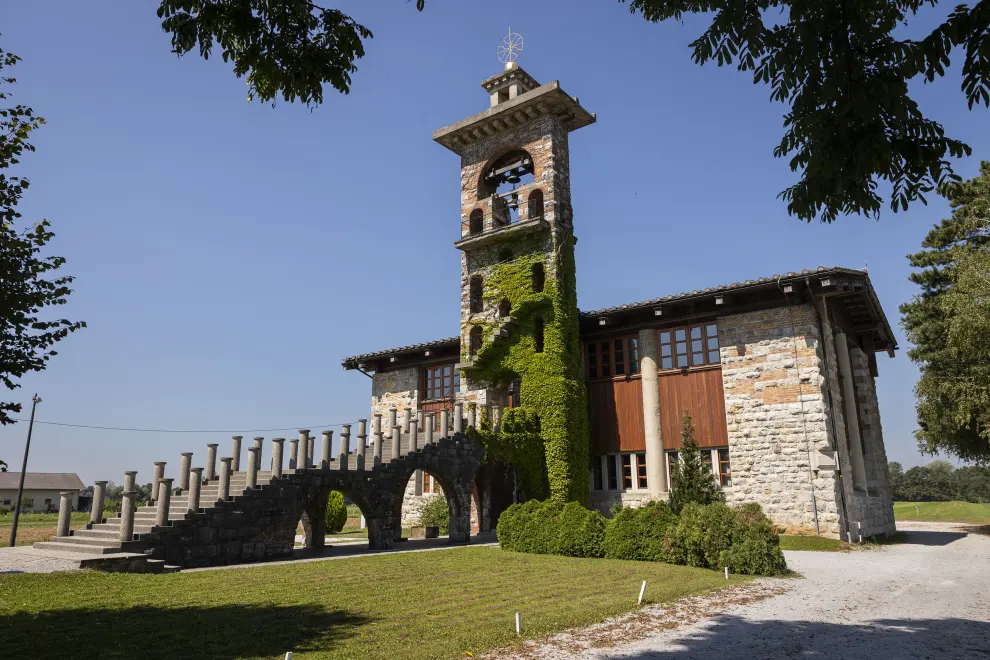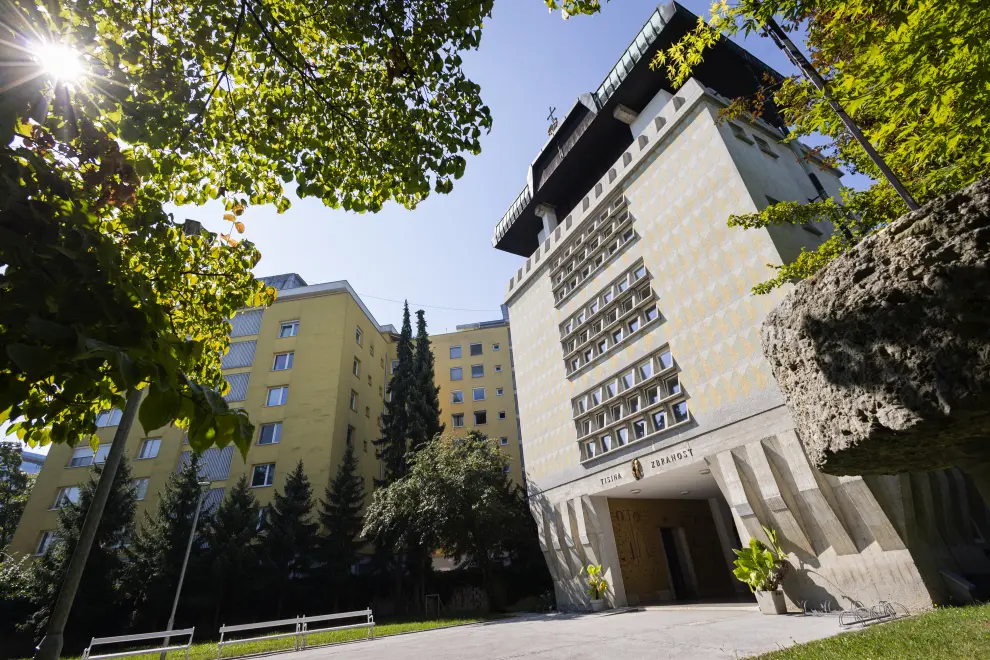Almost every village and hill in Slovenia boasts a church or at least a wayside shrine. There are nearly 2,700 churches and chapels in the country, although the exact number is difficult to determine.
According to ethnologist Silvester Gaberšček, there are more than 2,900 churches or buildings and ruins that used to be churches. Today around 2,400 churches are in use, most are Catholic, 19 Evangelical and three Orthodox. There are also two synagogues.
The large number of churches in such a small area is a phenomenon of sorts. A similarly dense network of churches is also present in South Tyrol, said Gaberšček.
The abundance of churches shows the character of Slovenians and their deep-rooted desire to profess their faith, said Franci Petrič, author of several books on Slovenian churches. Slovenians built churches "to always and quickly have 'access' to God", even when the Church and local priests were opposed to it.
First churches in Roman times
In Slovenia the first Christian sacral buildings were built in Roman times, when the area of Slovenia was split into four dioceses, Gaberšček said.
At the end of the 6th century the Lombards, an already Christianised Germanic people, continued with the church construction. Building on a large scale resumed when Christianisation started in the 8th century and with the arrival of friars in the 11th and 12th centuries.
Most churches in use today were built in a Romanesque style between 9th and 13th centuries. Many were later expanded or renovated in a Gothic, Baroque or Classical style.
In the 15th and 16th centuries the Ottomans were attacking Slovenia. Left with no other defences, farmers took to building walls around churches on hills, transforming them into fortresses of sorts. While men were fighting, women and children were praying in the church.
Majestic and impressive churches
Some of the oldest churches in Slovenia that are still standing today are rotundas, meaning round churches, such as the St Elijah Church in Koper or the John the Baptist Church in Muta in Northern Slovenia. Both were built in the 11th century.
The longest church in Slovenia at 70 metres is the Koper Cathedral. The Our Lady of Sorrows Basilica in Stična in central Slovenia would be even longer but it was made shorter in the Baroque period.
The largest church by volume is St Hermagoras and Fortunatus in Gornji Grad, a town north-east of the capital Ljubljana.
While beauty is in the eye of the beholder, Gaberšček listed as stand-outs the Gothic style Basilica of the Virgin of Mercy in Ptujska Gora, the Ljubljana Cathedral and the St Roch Church in Šmarje pri Jelšah.
Many also find the Žiče Charterhouse Church impressive, he said of the church ruin which is protected a retractable roof since last year.
Petrič is most intrigued by places with several churches, such as Svete Gore, a hill in eastern Slovenia adorned with five churches, and Tri Fare in the south-east, a pilgrimage complex with three churches inside a walled graveyard.
The most famous pilgrimage site is the Basilica of Mary Help of Christians in Brezje in the north-west. It also holds a special place in the hearts of Slovenians, Gaberšček said.
 Ljubljana St Michael's Church in Črna Vas near Ljubljana was designed by architect Jože Plečnik.
Ljubljana St Michael's Church in Črna Vas near Ljubljana was designed by architect Jože Plečnik.
The churches built by the celebrated architect Jože Plečnik are another gem of Slovenian sacral heritage. According to Gaberšček the St Michael's Church in Črna Vas near Ljubljana is truly unique in its layout, method of construction and interior.
Churches as a product of their time
Many churches reflect the time when they were constructed, especially through murals.
"In St Martin's Church in Bled the artist painted a portrait of Lenin in the place of Judas in a Last Supper mural," said Gaberšček.
Slovenian artist Tone Kralj painted the interiors of 47 churches in the western Primorska region. He portrayed positive characters with a physiognomy of Slovenians, while using more Germanic or Romanic characteristics when depicting negative characters. He even dressed the characters in national colours. Visitors with keen eyes will be able to spot personas such as Hitler and Mussolini.
After the Second World War some churches were nationalised by the authorities, which at the time persecuted the Church and religion.
Some of these churches were used for different purposes, such as the St Joseph's Church in Ljubljana, where the VIBA FILM film studio operated until 1995. The church on Ptujska Gora was for some years home to a museum.
Most of them were denationalised after Slovenia gained independence in 1991 but Ljubljana's Church of Our Lady of Help has still not been returned to the Teutonic Order.
The St Cyril and Methodius Church in Ljubljana has a unique story. It was built before World War II based on plans by Plečnik. Soon after the war the authorities wanted to construct a hall to host a congress of the Yugoslavia Communist Party in the same spot and planned to demolish the church.
 Ljubljana St Cyril and Methodius Church. Photo: Bor Slana/STA
Ljubljana St Cyril and Methodius Church. Photo: Bor Slana/STA
After protests by the religious intellectuals of the time, a compromise was reached in which the St Cyril and Methodius Church was moved to a nearby street. It was not allowed to have a recognisable bell tower so the bell tower was built in the shape of an apartment building.
This is an example of "the culture giving way to politics and ideology," said Gaberšček.
Churches in decline
In many rural areas where the population is declining, priests are unable to service all churches, which are slowly decaying. Vandalism is another issue.
The state helps but provides funds only for the churches that are deemed cultural monuments. The share of funds for sacral buildings maintenance changes according to political parties in power but on average a quarter of funds for all buildings under protection of monuments goes to sacral building maintenance, Gaberšček said.
In 2022 the state allocated €1.5 million for restoration of sacral buildings, slightly higher than the €1.4 million in 2021. Before the amounts were lower, such as in 2020 when the figure was at €320,000.
 Ljubljana St Michael's Church in Črna Vas near Ljubljana was designed by architect Jože Plečnik.
Ljubljana St Michael's Church in Črna Vas near Ljubljana was designed by architect Jože Plečnik.
 Ljubljana St Cyril and Methodius Church. Photo: Bor Slana/STA
Ljubljana St Cyril and Methodius Church. Photo: Bor Slana/STA
